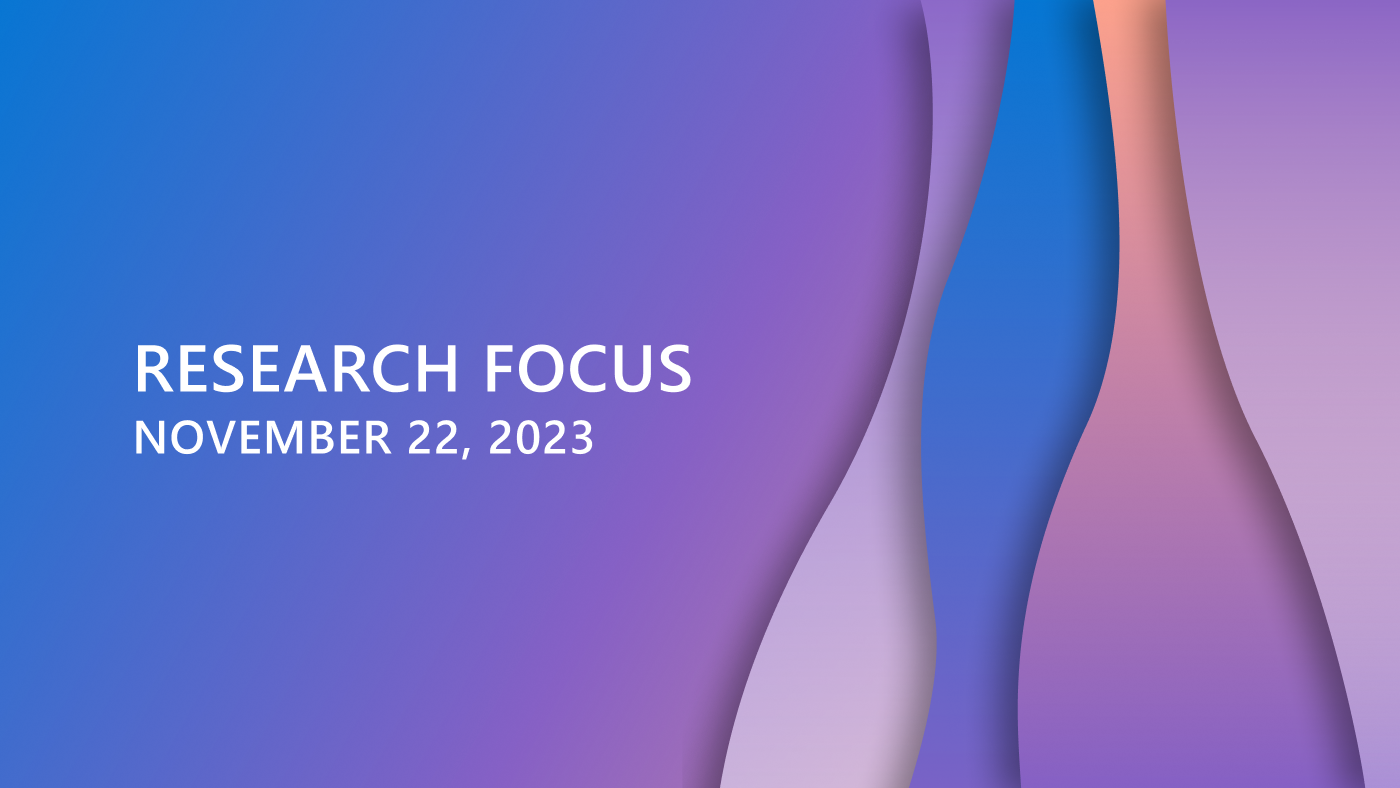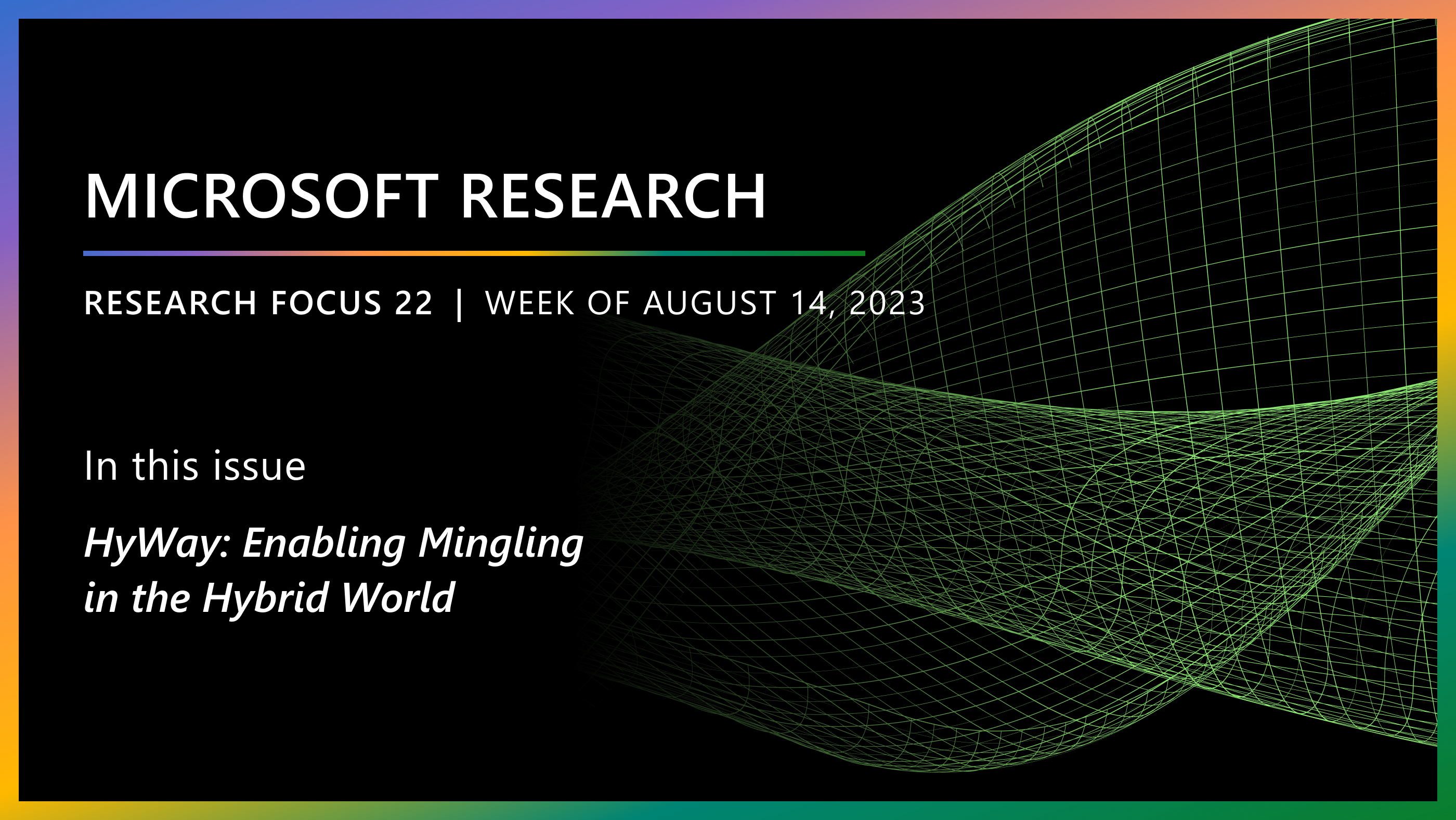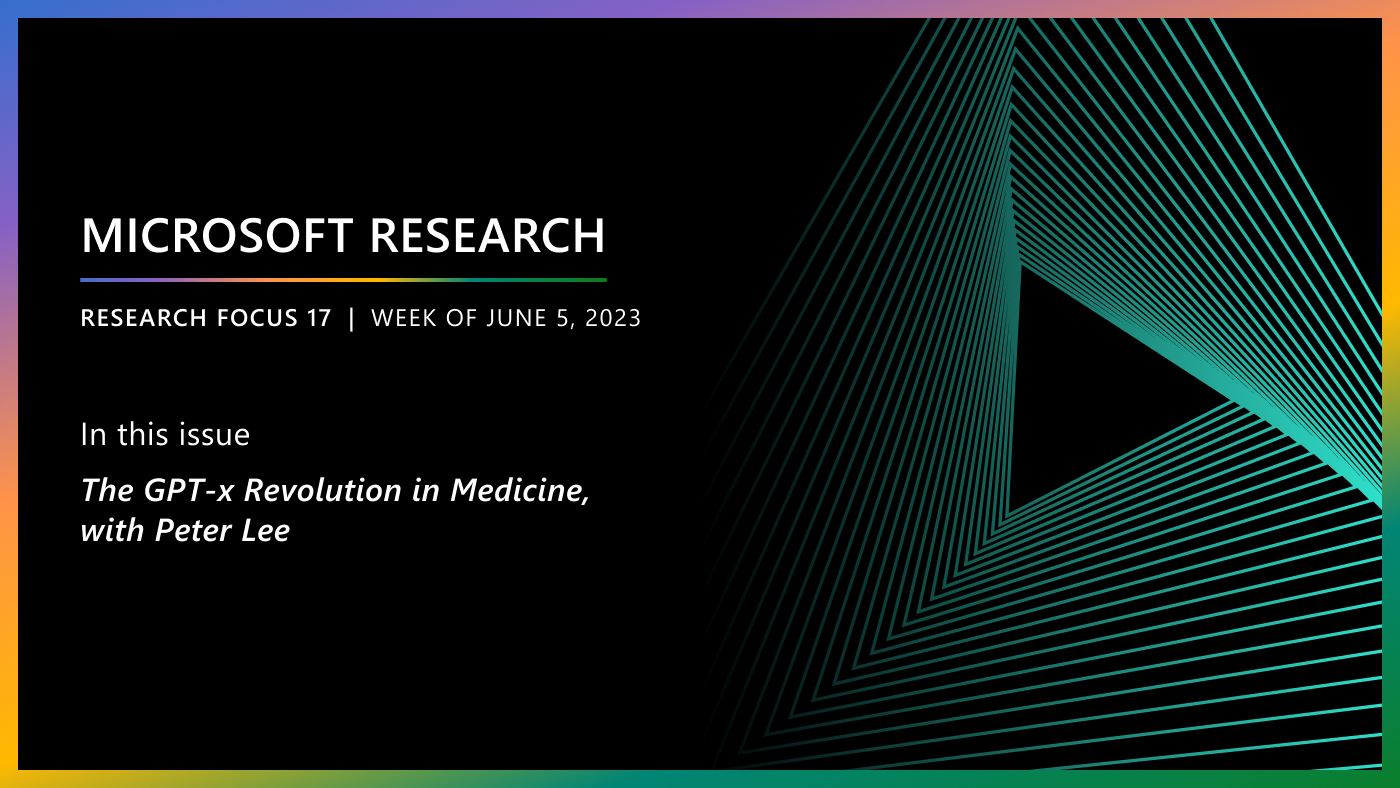
Welcome to Research Focus, a series of blog posts that highlights notable publications, events, code/datasets, new hires and other milestones from across the research community at Microsoft.
NEW RESOURCE
Responsible AI Maturity Model
As the use of AI continues to surge, new government regulations are expected. But the organizations that build and use AI technologies needn’t wait to devise best practices for developing and deploying AI systems responsibly. Many companies have adopted responsible AI (RAI) principles as a form of self-regulation. Yet, effectively translating these principles into practice is challenging.
To help organizations identify their current and desired levels of RAI maturity, researchers at Microsoft have developed the Responsible AI Maturity Model (RAI MM). The RAI MM is a framework containing 24 empirically derived dimensions that are key to an organization’s RAI maturity, and a roadmap of maturity progression so organizations and teams can identify where they are and where they could go next.
Derived from interviews and focus groups with over 90 RAI specialists and AI practitioners, the RAI MM can help organizations and teams navigate their RAI journey, even as RAI continues to evolve.
Microsoft Research Blog
Microsoft Research Forum Episode 3: Globally inclusive and equitable AI, new use cases for AI, and more
In the latest episode of Microsoft Research Forum, researchers explored the importance of globally inclusive and equitable AI, shared updates on AutoGen and MatterGen, presented novel use cases for AI, including industrial applications and the potential of multimodal models to improve assistive technologies.
NEW RESEARCH
FoundWright helps people re-find web content they previously discovered
Re-finding information is a common task—most online search requests involve re-finding information. However, this can be difficult when people struggle to express what they seek. People may forget exact details of the information they want to re-find, making it hard to craft a query to locate it. People may also struggle to recover information within web repositories, such as bookmarks or history, as these do not capture enough information, or present an experience to allow ambiguous queries. As a result, people can feel overwhelmed and cognitively exhausted when faced with a re-finding task.
A new paper from Microsoft researchers: FoundWright: A System to Help People Re-find Pages from Their Web-history, introduces a new system to address these problems. FoundWright leverages recent advances in language transformer models to expand people’s ability to express what they seek by defining concepts that can attract documents with semantically similar content. The researchers used FoundWright as a design probe to understand how people create and use concepts; how this expanded ability helps re-finding; and how people engage and collaborate with FoundWright’s machine learning support. The research reveals that this expanded way of expressing re-finding goals complements traditional searching and browsing.
NEW RESEARCH
Trace-Guided Inductive Synthesis of Recursive Functional Programs
In recent years, researchers have made significant advances in synthesis of recursive functional programs, including progress in inductive synthesis of recursive programs from input-output examples. The latter problem, however, continues to pose several challenges.
In a new paper: Trace-Guided Inductive Synthesis of Recursive Functional Programs (opens in new tab), which received a distinguished paper award from the ACM SIGPLAN Conference on Programming Language Design and Implementation (opens in new tab) (PLDI 2023), researchers from Microsoft and Purdue University propose a novel trace-guided approach to tackle the challenges of ambiguity and generalization in synthesis of recursive functional programs from examples. This approach augments the search space of programs with recursion traces consisting of sequences of recursive subcalls of programs. It is based on a new version space algebra (VSA) for succinct representation and efficient manipulation of pairs of recursion traces and programs that are consistent with each other. The researchers implement this approach in a tool called SyRup. Evaluating SyRup on benchmarks from prior work demonstrates that it not only requires fewer examples to achieve a certain success rate than existing synthesizers, but is also less sensitive to the quality of the examples.
These results indicate that utilizing recursion traces to differentiate satisfying programs with similar sizes is applicable to a wide range of tasks.
NEW RESEARCH
Wait-Free Weak Reference Counting
Reference counting is a common approach to memory management. One challenge with reference counting is cycles that prevent objects from being deallocated. Systems such as the C++ and Rust standard libraries introduce two types of reference: strong and weak. A strong reference allows access to the object and prevents the object from being deallocated, while a weak reference only prevents deallocation. A weak reference can be upgraded to provide a strong reference if other strong references to the object exist. Hence, the upgrade operation is partial, and may fail dynamically. The classic implementation of this upgrade operation is not wait-free—it can take arbitrarily long to complete if there is contention on the reference count.
In a new paper: Wait-Free Weak Reference Counting, researchers from Microsoft propose a wait-free algorithm for weak reference counting, which requires primitive wait-free atomic operations of “compare and swap”, and “fetch and add”. The paper includes a correctness proof of the algorithm using the Starling verification tool, a full implementation in C++, and a demonstration of the best- and worst-case performance using micro-benchmarks.
The new algorithm is faster than the classic algorithm in the best case, but has an overhead in the worst case. The researchers present a more complex algorithm that effectively combines the classic algorithm and the wait-free algorithm, delivering much better performance in the worst case, while maintaining the benefits of the wait-free algorithm.
NEW RESEARCH
Disaggregating Stateful Network Functions
For security, isolation, metering, and other purposes, public clouds today implement complex network functions at every server. Today’s implementations, in software or on FPGAs and ASICs that are attached to each host, are becoming increasingly complex and costly, creating bottlenecks to scalability.
In a new paper: Disaggregating Stateful Network Functions (opens in new tab), researchers from Microsoft present a different design that disaggregates network function processing off the host and into shared resource pools by making novel use of appliances which tightly integrate general-purpose ARM cores with high-speed stateful match processing ASICs. When work is skewed across VMs, such disaggregation can offer better reliability and performance over the state of the art, at a lower per-server cost. The paper, which was published at the 2023 USENIX Symposium on Networked Systems Design and Implementation (opens in new tab) (NSDI), includes solutions to the consequent challenges and presents results from a production deployment at a large public cloud.
NEW RESEARCH
Industrial-Strength Controlled Concurrency Testing for C# Programs with Coyote
Testing programs with concurrency is challenging because their execution is non-deterministic, making bugs hard to find, re-produce and debug. Non-determinism can cause flaky tests—which may pass or fail without any code changes—creating a significant engineering burden on development teams. As concurrency is essential for building modern multi-threaded or distributed systems, solutions are required to help developers test their concurrent code for correctness.
Testing concurrent programs comes with two main challenges. First is the problem of reproducibility or control, while the second challenge is the state-space explosion problem. A concurrent program, even with a fixed test input, can have an enormous number of possible behaviors.
In a new research paper: Industrial-Strength Controlled Concurrency Testing for C# Programs with Coyote, (opens in new tab) researchers from Microsoft describe the design and implementation of the open-source tool Coyote for testing concurrent programs written in the C# language. This research won a 2023 Best Software Science Paper award (opens in new tab) from The European Association of Software Science and Technology (EASST).





